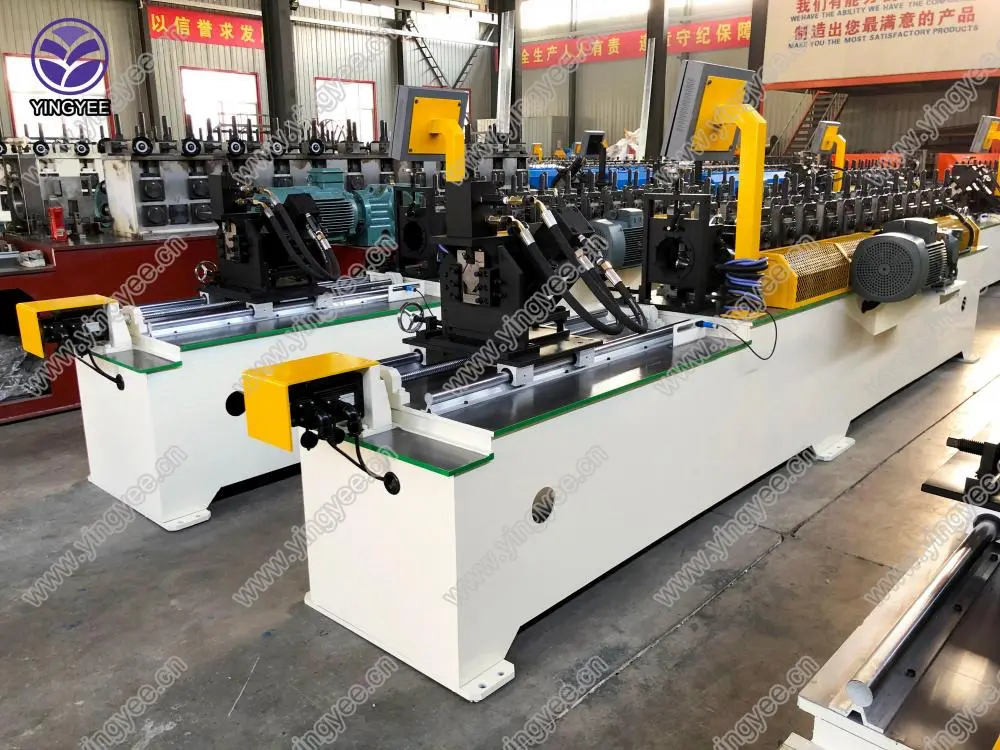
The Importance of Cold Bending Machines for Noise Barriers
In the realm of civil engineering and construction, noise pollution has become an increasingly pressing issue. As urban areas continue to expand, the need for effective noise mitigation solutions has reached new heights. One of the most effective methods to combat this is through the installation of noise barriers, which can significantly reduce sound levels in residential areas near busy roads, highways, and railways. A key component in the production of these barriers is the cold bending machine.
Understanding Cold Bending Machines
Cold bending machines are specialized equipment designed to shape materials, particularly metals, into desired forms without the necessity for heating. This process involves the application of immense pressure to bend the material to specified angles or curves. The cold bending method offers numerous advantages, especially when it comes to manufacturing noise barriers.
Advantages of Cold Bending in Noise Barrier Production
1. Material Integrity One of the primary benefits of using cold bending techniques in the creation of noise barriers is that it maintains the integrity of the material. By avoiding high temperatures, the molecular structure of the metal remains unchanged, ensuring that the barriers are strong and durable over time.
2. Precision and Consistency Cold bending machines offer exceptional precision, which is vital when crafting noise barriers that must fit perfectly to specific architectural designs and environmental settings. This consistency translates to a high-quality end product that can effectively reduce noise levels.
3. Versatility These machines can work with a variety of materials including steel, aluminum, and composite materials, allowing manufacturers to choose the best substrates for their noise barriers. The versatility of cold bending machinery enables the production of custom shapes and sizes to meet the unique requirements of different projects.

4. Reduced Waste With the ability to create accurate bends and shapes, cold bending minimizes material waste, making it a more environmentally friendly option compared to other bending methods that may require additional cutting or reshaping.
Applications of Noise Barriers
Noise barriers are strategically placed along highways, railways, and near industrial areas to protect residential communities from harmful noise pollution. The barriers absorb and deflect sound waves, resulting in quieter living environments. Cold bending machines facilitate the production of aesthetically pleasing barriers that can blend seamlessly into the landscape while serving their functional purpose.
Innovations in design, such as the incorporation of green materials or artistic elements, can also be achieved through the use of cold bending technology. This leads to not only functional installations but also visually appealing structures that enhance urban spaces.
Future Trends
As urban development continues to rise, the demand for efficient and effective noise barriers will only grow. The advancements in cold bending technology will likely lead to even more innovative approaches in noise barrier design and fabrication. Manufacturers may explore automated processes and smart materials that respond to environmental conditions, further improving the effectiveness of noise reduction.
In conclusion, the role of cold bending machines in the production of noise barriers is crucial for addressing the challenges of noise pollution in modern urban environments. By combining precision engineering with material integrity, these machines provide an essential tool for creating effective solutions that improve the quality of life in communities affected by noise. As technology evolves, so too will the methods and materials used in noise barrier construction, promising even greater efficacy in the years to come.